SUN DANCE II is a sprightly 17′ sailing dinghy whose design dates back to 1901. The original boat of the series from which she emerged, designed by N.G. Herreshoff and built by the Herreshoff Manufacturing Company, was a daysailer meant to be carried aboard the 189′ Gardner & Cox–designed steam yacht COLONIA owned by Frederick G. Bourne. An avid yachtsman, Bourne was president of Singer Manufacturing, the sewing machine company, between 1889 and 1905. He was also a member of several yacht clubs and commodore of the New York Yacht Club from 1903 to 1905. Bourne, with these bona fides, had a refined taste in boats, and knew what he wanted in a daysailer when he commissioned COLONIA’s dinghy. Herreshoff went on to build 36 Colonia dinghies, as boats built to this design and its variations have come to be called.
SUN DANCE II is a copy of a Herreshoff-built boat called GARRYOWEN, which was launched 1926. GARRYOWEN was built for Charles Goodwin, who visited the Herreshoff shops in late June that year and placed an order, on the spot, for a daysailer for use at Essex, Connecticut. Based on correspondence in the archives of the Herreshoff Marine Museum (HMM) in Bristol, Rhode Island, Goodwin seemed to have been considering Coquina, a 16′8″ cat-ketch that Herreshoff had designed for his own use. The day after Goodwin’s visit, Herreshoff wrote him suggesting he consider something else:
“We have moulds for another boat…which I think would make a better boat for you and probably as fast under ordinary conditions. I am enclosing profile and half breadth of deck of each for comparison which will show better by holding paper up to light. This later design has an over hang forward which gives very graceful lines.”
Herreshoff went on to give the boat’s dimensions as “17ft 2in extreme length, 14ft 8in waterline, 5ft 5in beam, 24in deep and 16 1/2in freeboard at midsection.” He further described the floors as being “a little flatter than Coquina, giving a much fuller builge [sic] and of course much more natural stability and capable of carrying larger sails. Boats built from this model have usually been rigged with mainsail & jib and the last had jib-headed [aka Bermudan] mainsails set on short masts with yard having jaws in sails. If the extreme length of 17ft 2in is used the two masted rig could be used, but if the boat is made much shorter probably the jib & mainsail rig would be desirable to get sufficient sail area.
“The hull of this model 17ft 2in long would probably weigh 300lbs and with all gear on board except ballast nearly 400lbs.”
The resulting boat had frames—presumably of oak—spaced 7 1/2″ apart. She had a 5/8″ butternut transom and was lapstrake-planked in 5/16″ white cedar. The stern deck was also planked in 5/16″-thick white cedar and sheathed in canvas. Coamings and sternsheets were butternut. SUNDANCE II, a copy of GARRYOWEN, was built around 1975 to the original scantlings but trimmed in mahogany, as was COLONIA’s original dinghy. The builder’s identity is obscure. She carries the signature molded Herreshoff sheerstrakes—an eye-pleasing sculptural detail that eases the transition from topsides to deck edge and offers additional wood for deck-edge fastenings.
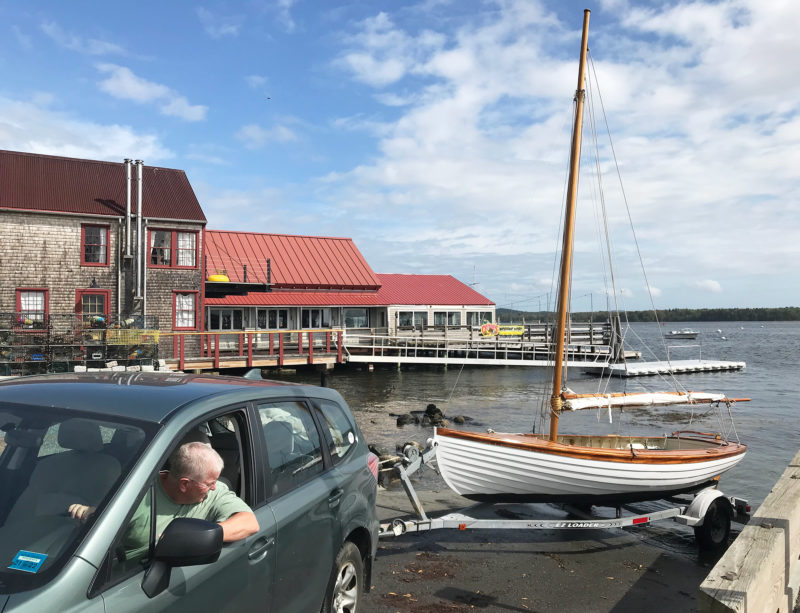 Photographs by the author
Photographs by the authorDavid Gardner hauls his 17′ daysailer, SUN DANCE II, on the ramp in Castine, Maine. The boat was designed by Nathanael Herreshoff in 1901, and numerous modified versions were built over the ensuing decades.
In classic “barn find” fashion, SUN DANCE II’s current owner, David Gardner, found her in 2017 at a yard sale near Castine, Maine. “From a quarter mile away,” he recalls, “I knew it was a Herreshoff.” David, at first, thought the boat might be a Coquina, a design recently made popular through the efforts of Maynard Bray and Doug Hylan, who redrew the plans for glued-lapstrake plywood construction.
David purchased the boat, embarked upon a restoration, and began researching its origins. In consultation with Bray, he determined that it was built to the design of COLONIA’s sailing dinghy. As is the case with most N.G. Herreshoff designs, there are no published lines for this boat. Herreshoff’s design process began with the carving of a half model which, once refined, he would measure on a purpose-built device in order to develop a table of offsets. Those offsets would be used to create a full-sized body plan, and then molds.
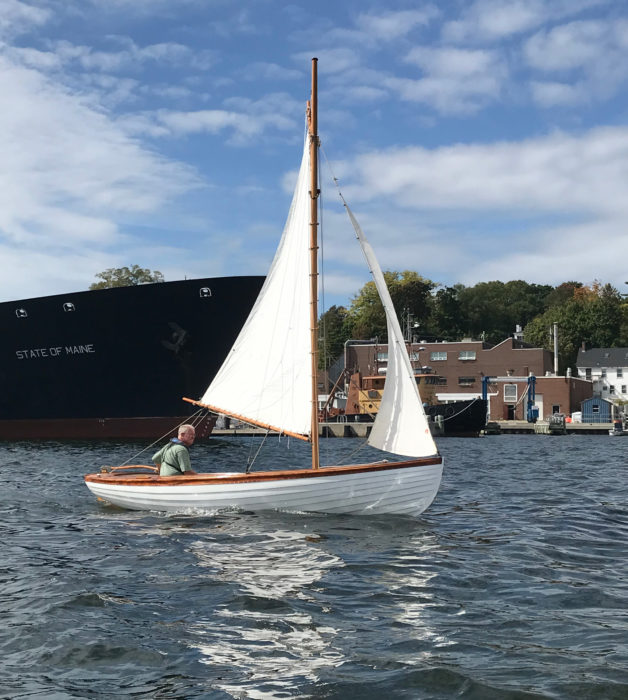
David spent two summers restoring SUN DANCE II. He was then a vice president at Maine Maritime Academy in Castine, where he had access to the boat shop, the sail loft, and lots of expert guidance. In the background is the academy’s training ship, STATE OF MAINE.
Luckily for David, lines weren’t required for his refurbishing of SUN DANCE II. She had a few fiberglass patches, which David left in place, but “structurally,” he said, “she was pretty sound.” He spent two summers bringing SUN DANCE II back to sailing condition. He was working then as an administrator at Maine Maritime Academy in Castine, and so had access to the school’s well-equipped boatshop—not to mention a fair amount of expert guidance.
Although the hull was intact, the boat’s details and finish needed attention. “The centerboard was splitting apart,” he said, so he built a new one—a five-stave affair, weighted with about 4 -1/2 lbs of lead to sink it. The sole needed replacement, so he used the old one as a template in constructing a new one. He also removed a small bowsprit, which was never part of the design. He built a new mast, joining the staves using the bird’s-mouth joint technique, and he built his own sails in the Maine Maritime Academy sail loft.
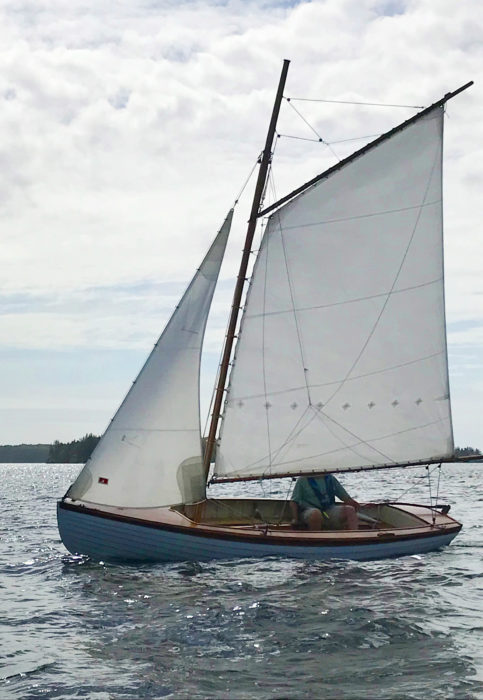
When David found SUNDANCE II for sale at a local yard sale, the rig had been modified to a marconi sloop—with additional maststeps to configure the boat as a cat yawl. He consulted the original Herreshoff drawings to build a new rig and made the sails himself.
The boat, as found, was marconi rigged with a “crummy old solid-wood mast” that was warped. “It was clearly not original,” David said. She had about 94 sq ft of sail, and there were two maststeps, so it could be alternately rigged as a catboat or a sloop. David found the original 1901 gaff sail plan and drew up a new sail plan based on this. He notes that the boat “had suffered from some crude carpentry over the years.” He went to some lengths to correct this but was mindful of the fact that he wanted to sail the boat. And so, he struck a careful balance between functionality and originality.
“A restoration purist might frown at some of the stuff I’ve done,” David added. Maybe they would, maybe they wouldn’t. In the several times I’ve encountered SUNDANCE II at the Castine Town Landing, she has swelled a crowd of admiring visitors.
I was one of those admiring visitors in 2019 when I first met David and SUN DANCE II at the landing, soon after he relaunched her. I had a similar reaction to David’s when he first encountered the boat: There was something distinctly Herreshoff about her, but she wasn’t quite a Coquina. David unfolded her story for me, and we resolved then to go for a sail—and finally found the opportunity to do so last fall.
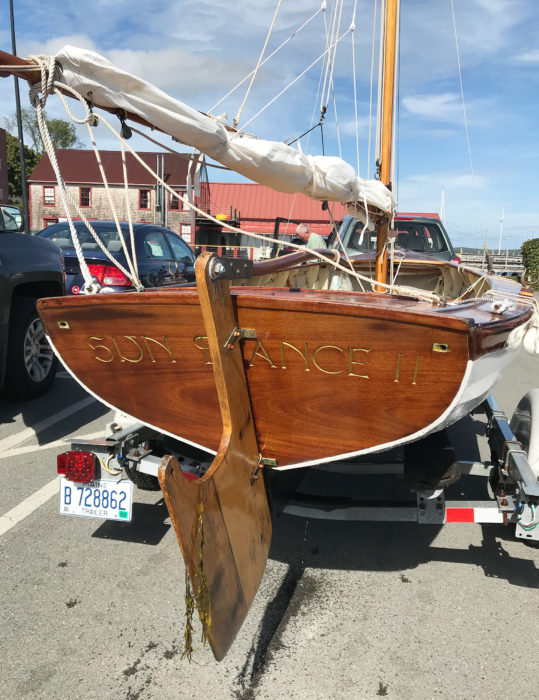
Launching and retrieval are straightforward processes with SUNDANCE II, though David is considering keeping her on a mooring.
I met David in the parking lot of the landing on the day of our outing. The boat was on a trailer behind his Toyota Rav4, with the mast laid in a custom cradle on deck. He rigged and prepared the boat—an operation that took about 20 minutes working by himself —and stepped the mast through the hole bored in the thwart. David then secured the shroud and forestay lashings, launched the boat, paddled her to the float, rigged the sails, and we were off.
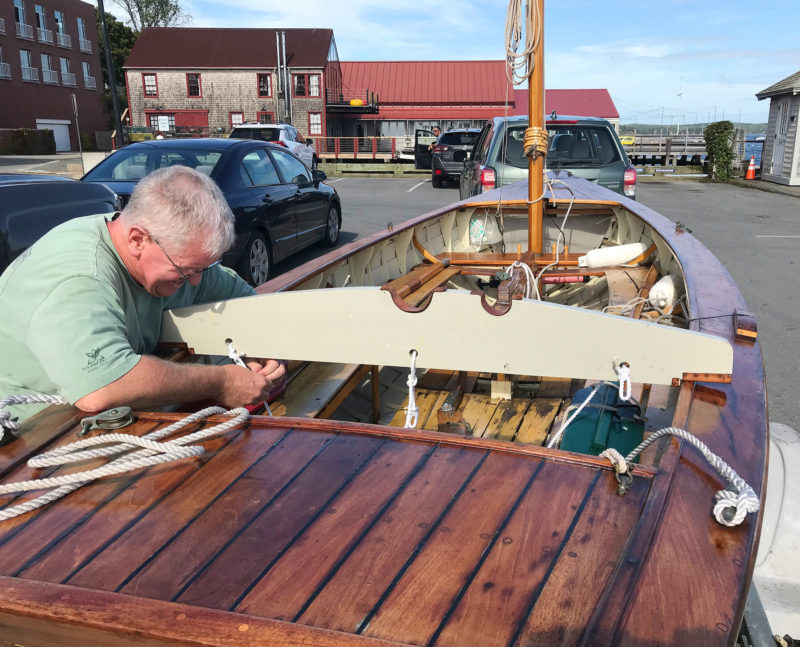
This custom spar cradle allows the mast, boom, and gaff to be securely carried on deck for trailering and storage.
It was gusting to about 18 knots that day, and I was immediately impressed with SUN DANCE II’s acceleration, as compared with her keel-configuration cousin, the Herreshoff 12-1/2. I’ve often thought of the 12-1/2 as a little big boat. It has the feeling of a true displacement boat, notably as the wind comes up and she begins drawing a quarter wave. SUNDANCE II’s acceleration is more reminiscent of a racing dinghy—but a comfortable one with bench seating, traditional appearance, and the capacity to carry two grown men.
The boat was easy to rig. The halyards are made off to belaying pins in the mast partner/thwart, and the sheets lead easily to the helm. In puffs, she would heel to the deck edge and then stay there—though it was imperative that the skipper keep the mainsheet in hand and remain alert. Crew-weight distribution mattered. That boat carries 120 lbs of lead ballast in the bilge and, despite, flotation foam in the bow and stern, capsize recovery would be a considerable project.
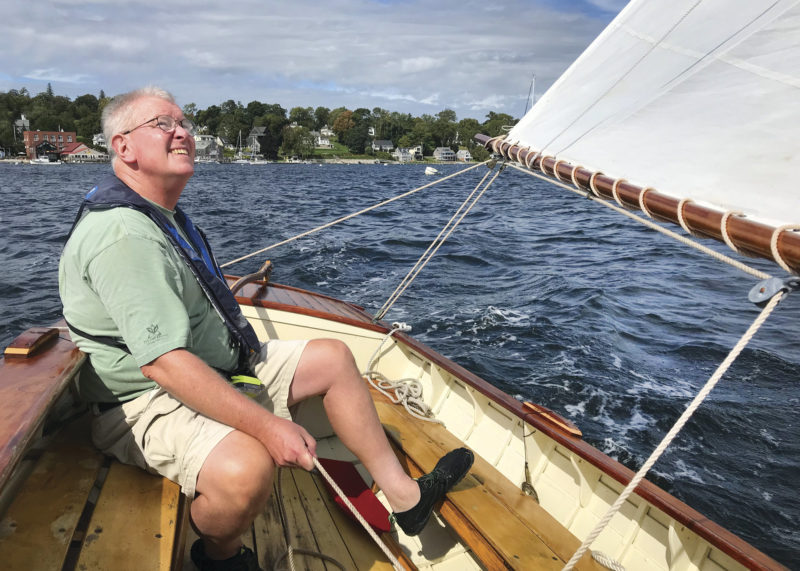
David Gardner at the helm of SUNDANCE II. The main and jib sheets are led to within easy reach of the helm, allowing for easy singlehanding.
The boat is quick in stays and responsive to changes in sail trim. She was easy to singlehand, with the mainsheet led through a turning block on the top of the centerboard trunk and the jibsheets within easy reach of the helm. The seating is comfortable, with easy bracing against the leeward seat when the boat heels.
For a middle-aged sailor seeking a combination of excitement, comfort, and traditional good looks, the Colonia dinghy is worth serious consideration. Building one would require some research, as well as an advanced grasp of lofting and boatbuilding. The 36 iterations built by Herreshoff were adjusted, sometimes considerably, to meet the owners’ needs, though the offsets for the original boat, taken from the model, are archived in the Hart Nautical Collections of the MIT Museum in Cambridge, Massachusetts. There are copious construction and detail drawings in those archives, as well as at the Herreshoff Marine Museum. This material is cited in The Herreshoff Catalogue Raisonné, a vast online catalog of Herreshoff material from both collections. ![]()
Matthew P. Murphy is the editor of WoodenBoat magazine.
Colonia Dinghy Particulars:
[table]
LWL/17′ 3″
Beam/5′ 6″
Draft, board up/7.75″
Draft, board down/3′
[/table]
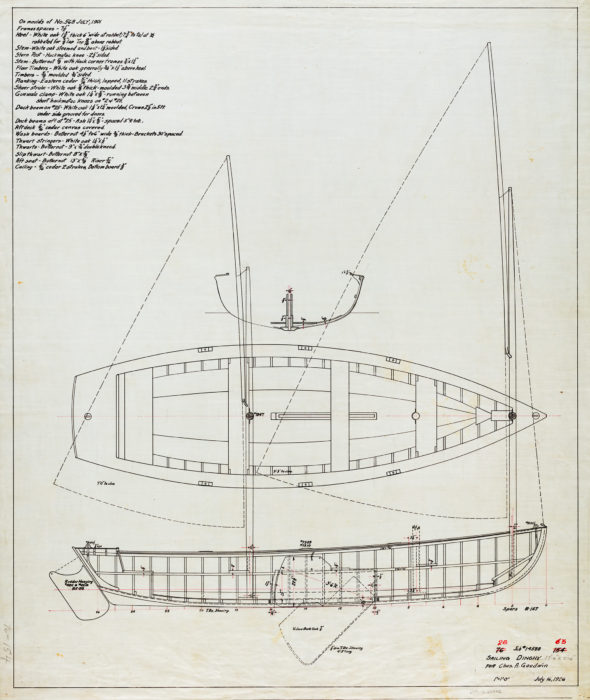 MIT Museum
MIT Museum.
Readers searching for plans and details in the Catalogue Raisonné should be sure to read its discussion of copyright and seek permission and high-resolution files from the MIT or HMM archives, as needed. (The MIT Museum, at this writing, is in the process of moving and is thus closed to research requests, but that situation is forecast to change in the near future.)
Would-be builders who are captivated by this boat, and want an easier path to commence building, might give Coquina a close look, just as Charles Goodwin did back in 1926. Joe Brennan’s cold-molded Coquina appeared in the November 2014 issue of Small Boats. The highly detailed plans package assembled by Maynard Bray and Doug Hylan is available from Hylan & Brown Boatbuilders.
Is there a boat you’d like to know more about? Have you built one that you think other Small Boats Magazine readers would enjoy? Please email us!
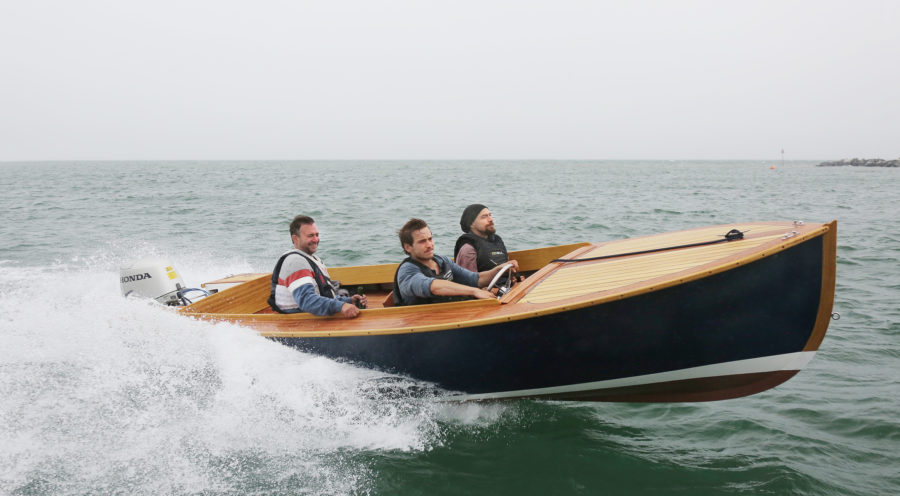
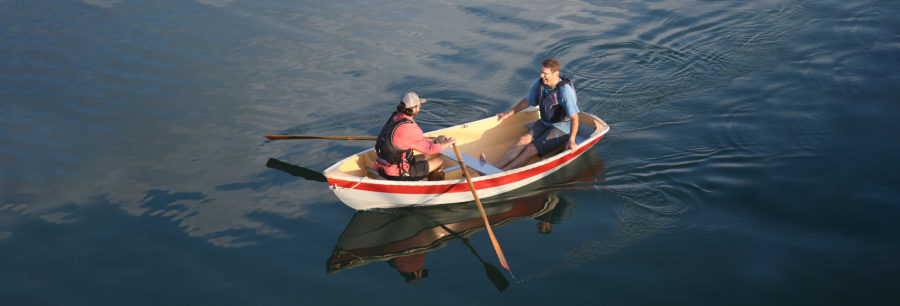

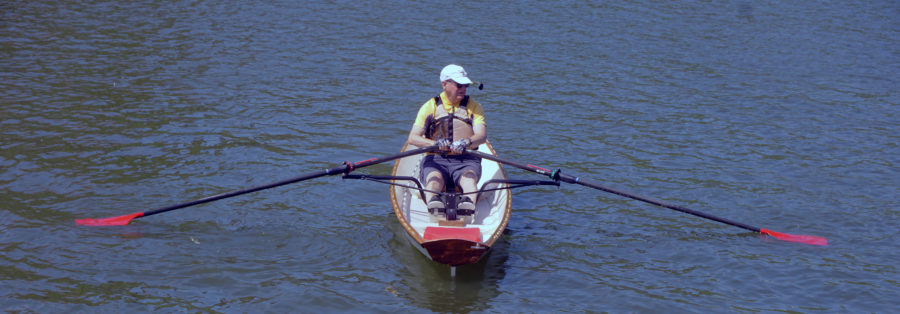

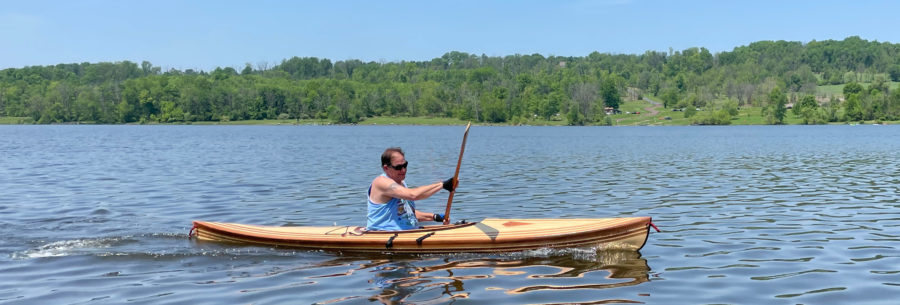


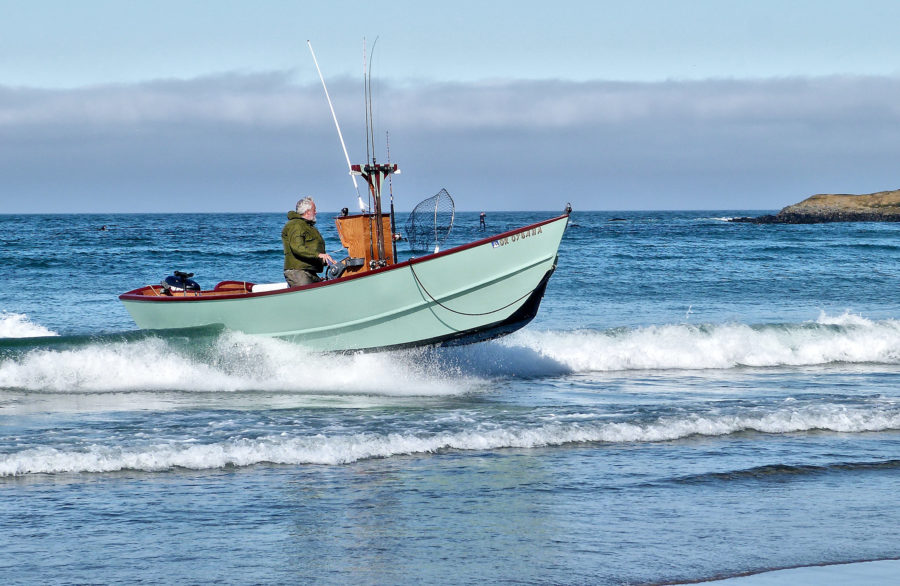
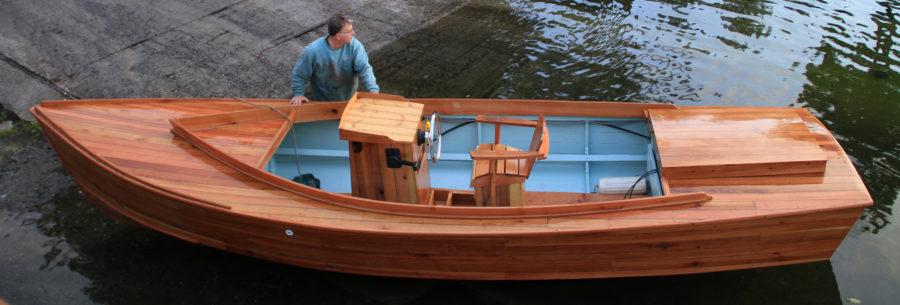
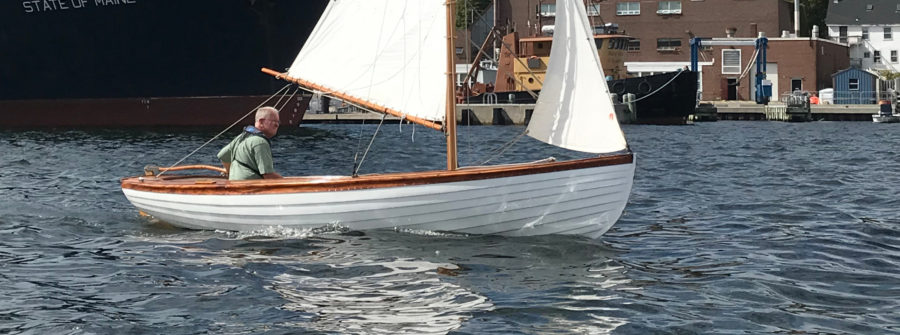
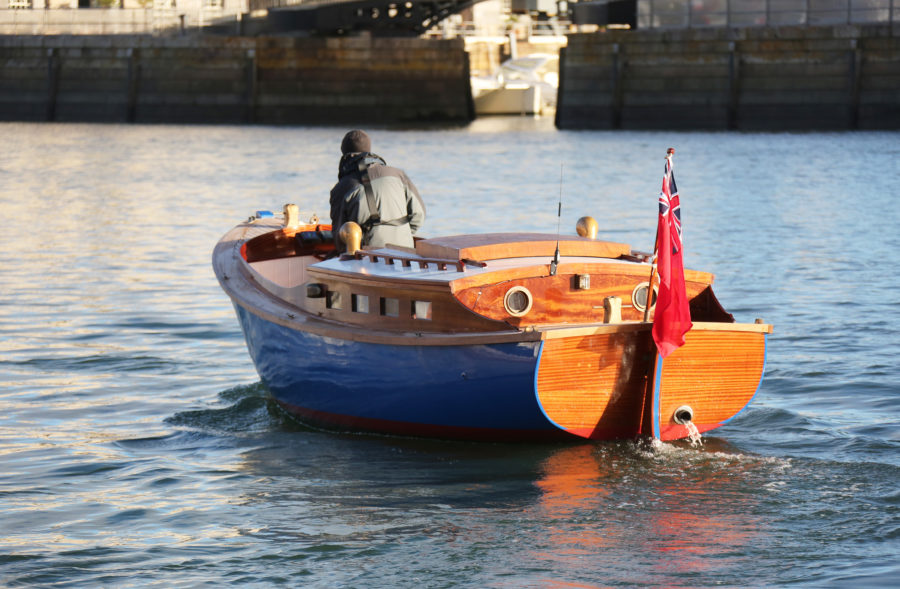
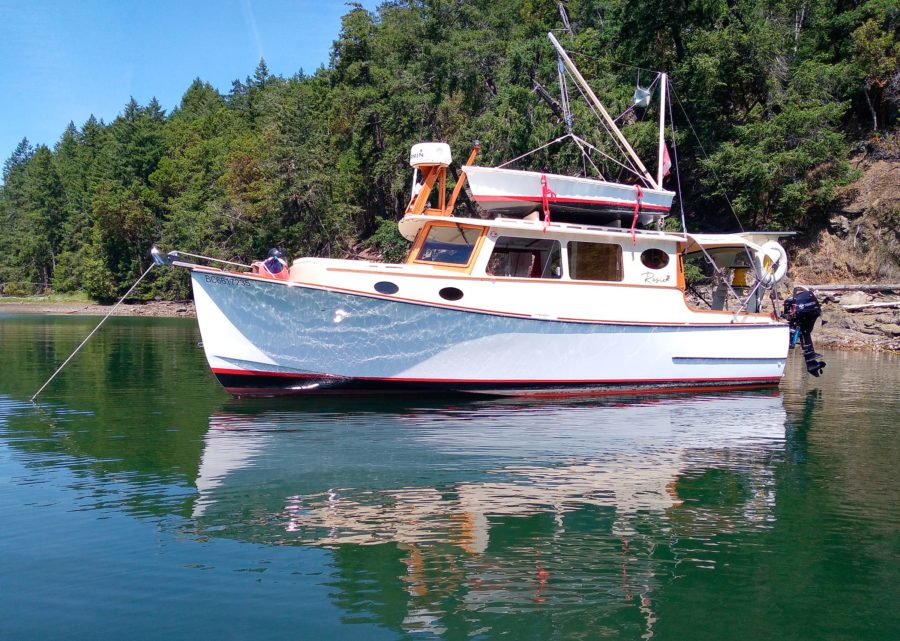
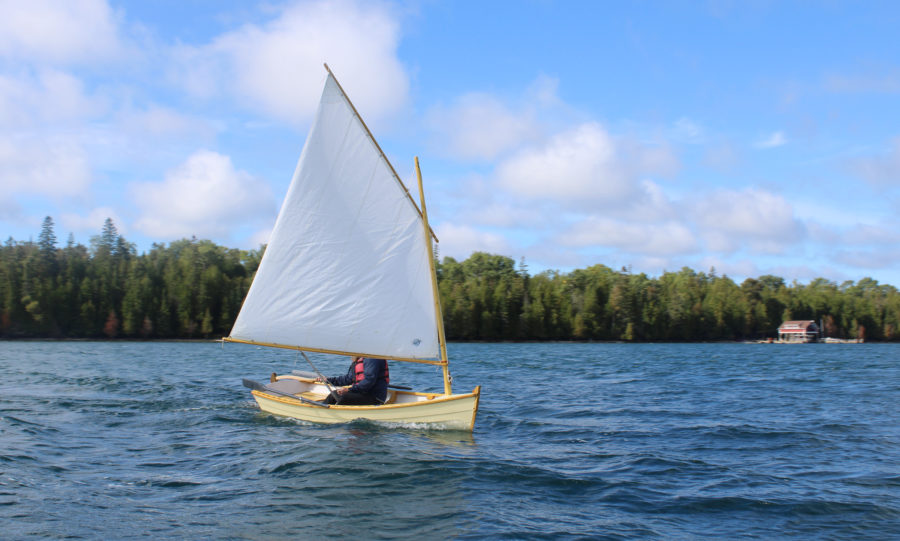
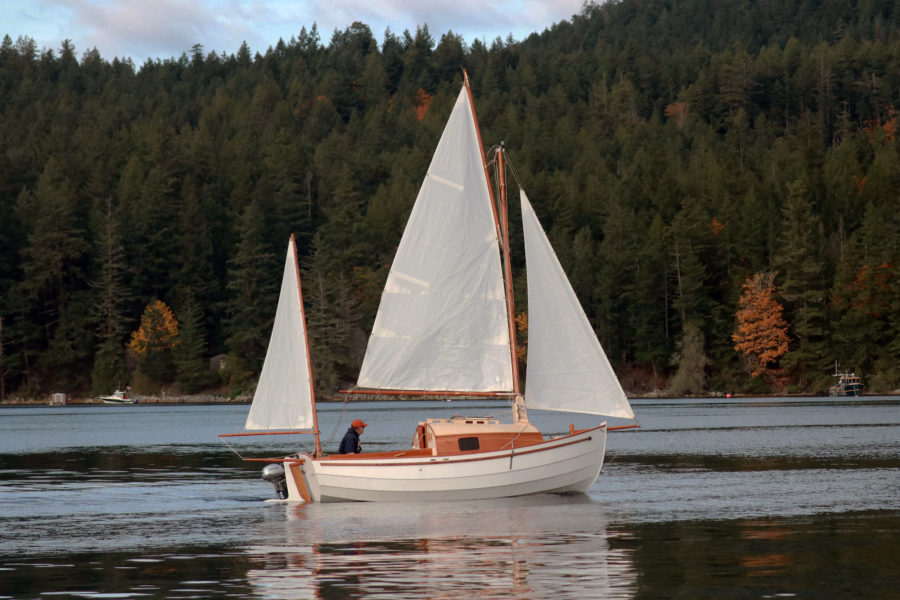
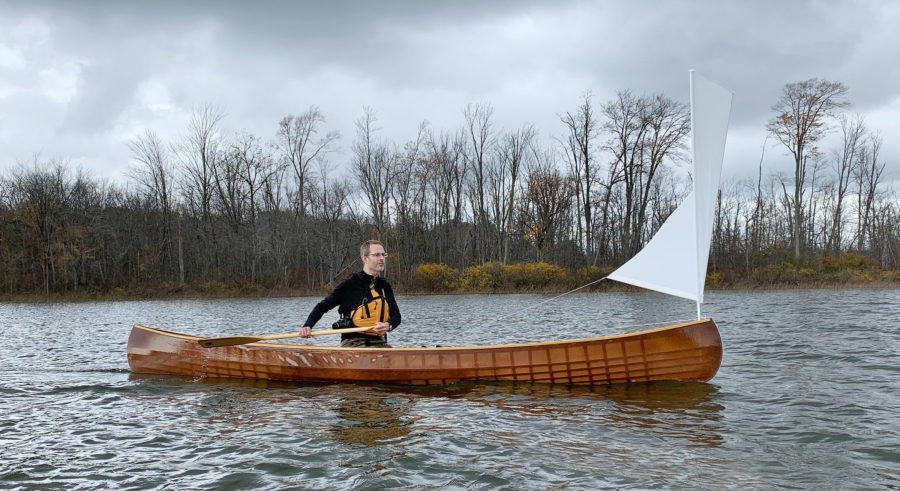
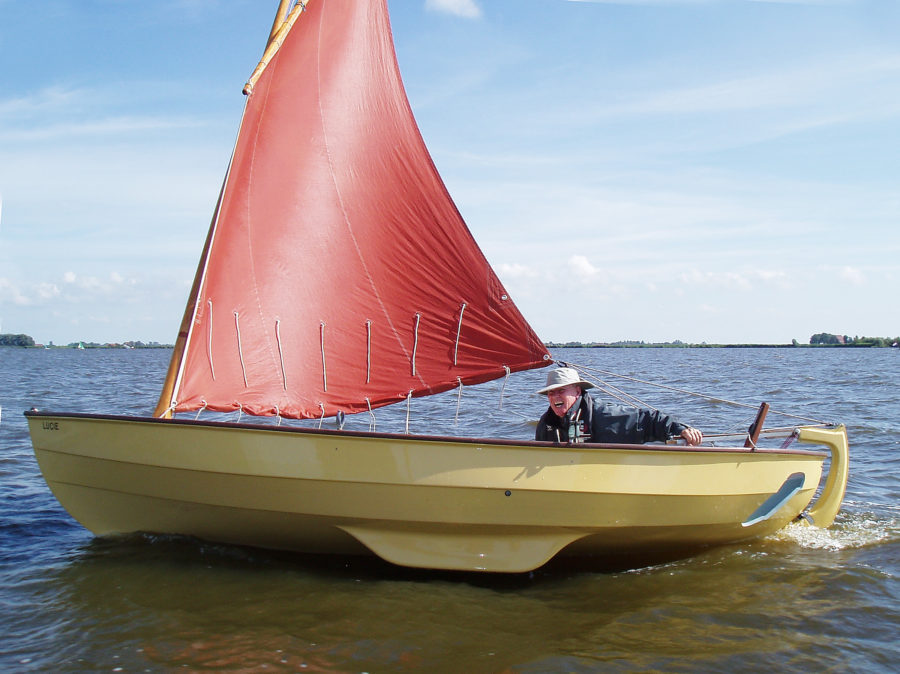
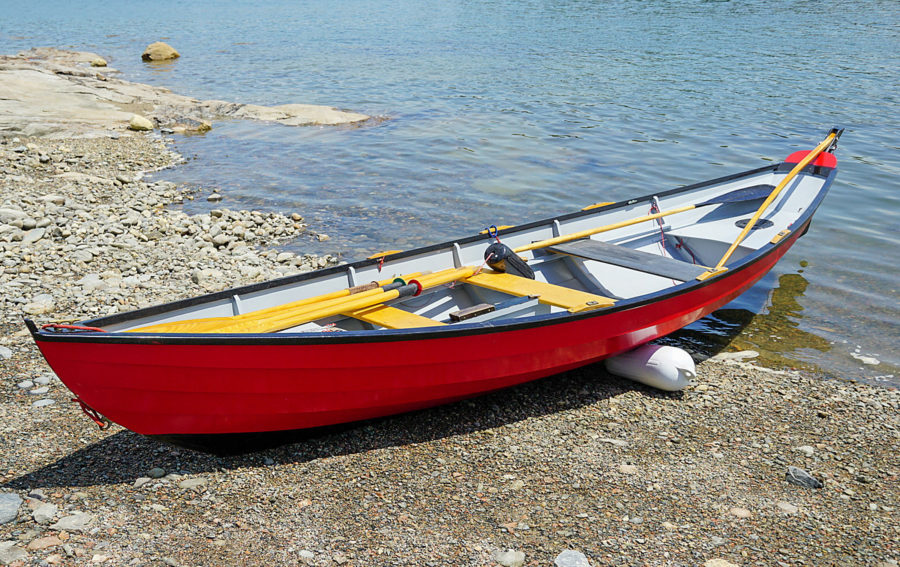
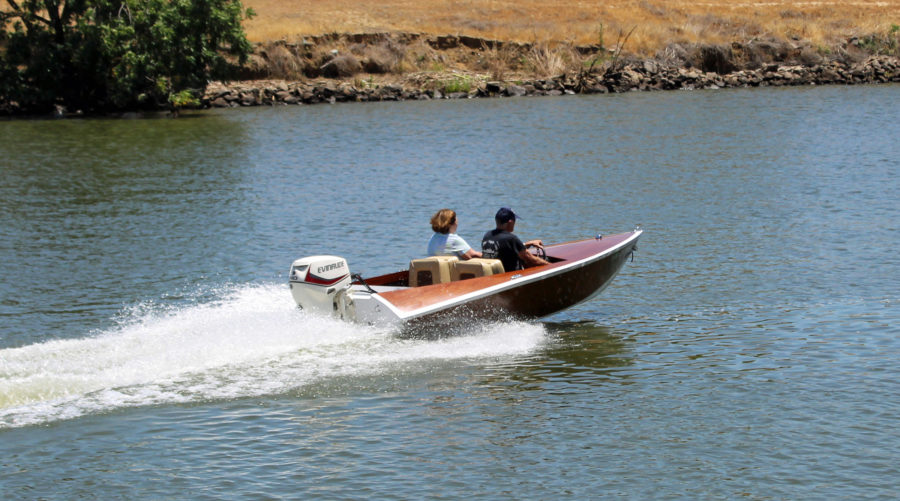
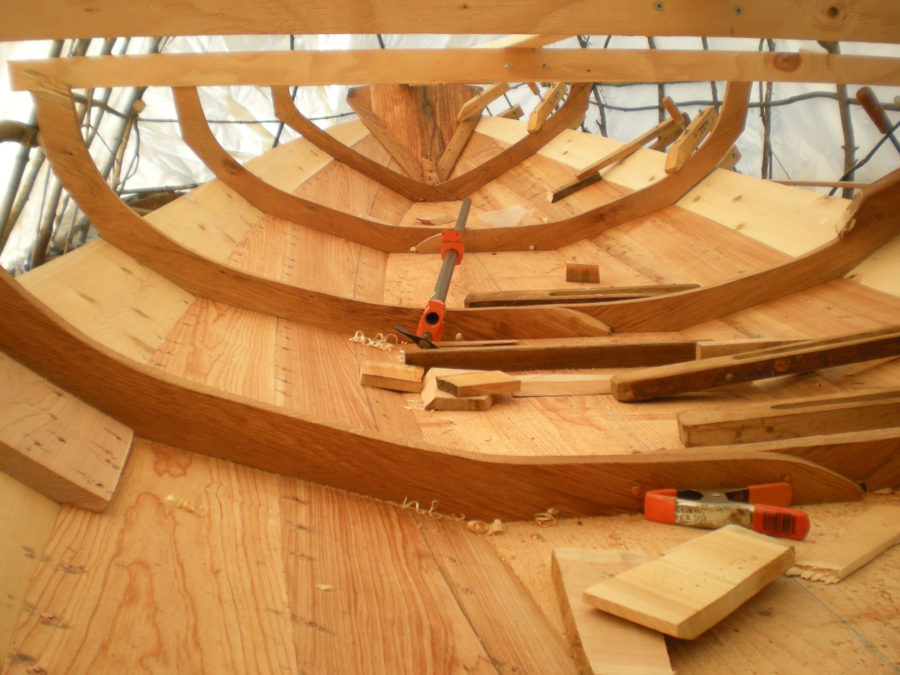
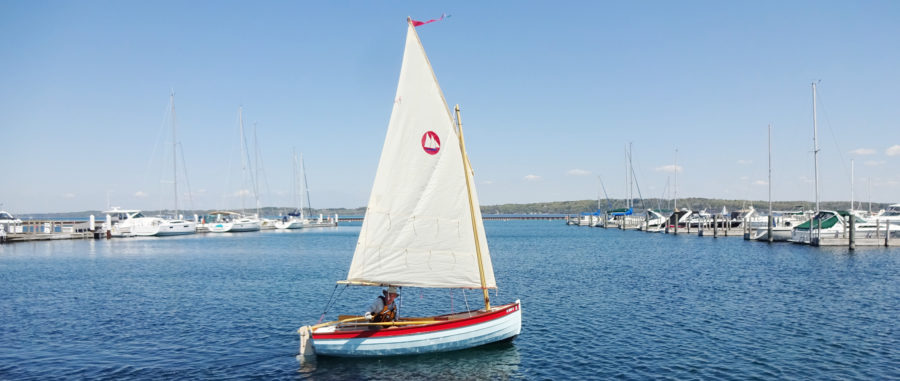
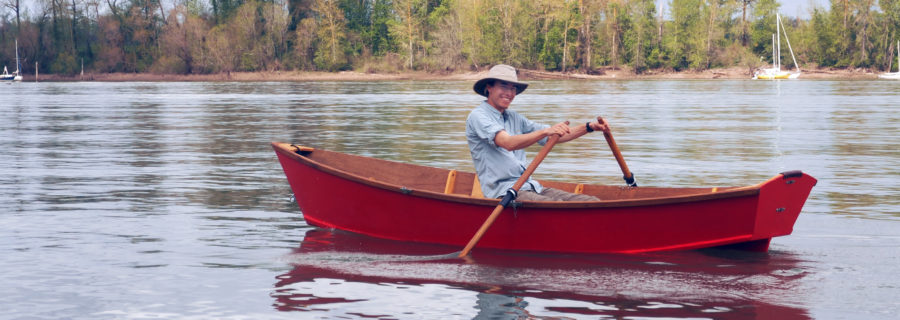
This cutie has ballast. I can’t find any information on how to add ballast to a sailing dinghy. I would like to add some to my sailboat to add a bit of stability until I am more comfortable sailing her. I would appreciate any advice. Thanks in advance.
For suggestions on ballast, see Trim and Ballast and Ballast Bags.
—Ed.
Right now lead shot is very expensive; about 4 bucks a pound. You’ll be buying it in 25 pound bags. Canvas coin bag clones in which to drop the plastic bag in which it comes are readily available. That said, a plastic bag of shot protected by a canvas bag lasts for years. Consider it an investment.
More research says that you can get lesser grade shot, reclaimed shot for just over 2 bucks a pound from suppliers like Rotometals.
WOW!!! Love this design and Herreshoff. Sailed on a bigger Herreshoff design growing up, my parents boat. I am unfamiliar with this design, but always loved the Coquina lines, but prefer a sloop rig.
I now have an Arch Davis Penobscot 17′ “barn find” from Maryland and your story has given me some great modification ideas. Have been looking to redesign her rudder and this looks just like what I was thinking for our “skinny” waters down here on the SOBX, NC*.
Thanks again, Nat…..through the years~ _/)
*Southern Outer Banks, North Carolina
Yes…. really enjoyed the article. Wonderfull boat. I sail a similar boat size with some similar characteristics, the 16′ 8″ Fulmar (Oughtred). Singlehanded sailing, a couple of lead ingots are tied down to each side of the centerboard housing, giving the same 120 lbs ballast as SUN DANCE II.
Taming a lively, more race-oriented dinghy to suit day sailing, cruising/camping is my objective.
Hello,
Good to see SUN DANCE still sailing, she was built in our shop by our neighbor and master navigator Clinton Loyd. He took the lines off the original GARRY OWEN, which was stored and sailed for many years out of our yard by the Reverend Charles Goodwin, son of the original owner and an Episcopalian missionary to Korea for the last forty or so years of his life.
Clinton Loyd’s previous boat was the 42 foot S&S sloop SUN DANCE, Derektor’s first or second aluminum build. Clinton used Alaskan cedar to plank his Herreshoff, and designed a sloop rig for her. I thought the boat ended up in California when Clint moved there in his later years.
Thanks for the nice article, Matt!
Photographs of the restoration can be viewed at my Facebook page.
She has wonderful lines. Any plans to try out the setup for line steering?
The boat has all the fairleads to do so. Opening the lazarette to run lines through is not appealing, with all the styrofoam I stuffed in there during the restoration. I find the idea intriguing, and have read posts from Coquina owners about how convenient the system is “once you get used to it,” but I have no plans currently to rig it. The tiller is second-nature.
From author Matt Murphy:
An anonymous reader recently wrote me with a few interesting amplifications to the story above. Three Herreshoff-built Colonia dinghies have survived. One is the original GARRYOWEN itself. Another is No. 1093s, recently restored by Warren Barker and students at IYRS in Newport, Rhode Island. The third
is No. 192104es (a sailing lifeboat for Herreshoff design No. 267p, ENAJ III) now in the collection of Mystic Seaport Museum, and well worth studying for anyone contemplating the very involved task of replicating an original
Colonia Dinghy. Readers considering such a project would do well to consult the book Building the Herreshoff Dinghy, by Barry Thomas (Mystic Seaport Publications, 1977).
Readers interested in learning more about specific aspects of the COLONIA Dinghy may click on the following topics to be taken to the appropriate pages of the Herreshoff Catalogue Raisonné: GARRYOWEN, the boat’s half model, the offset booklet, the 36 iterations of the boat built by Herreshoff.